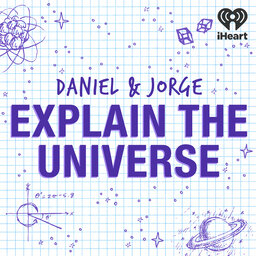Can we put black holes to work for us?
Daniel and Jorge discuss how the twisted spacetime around a spinning black hole can be used to pull energy from a black hole.
Learn more about your ad-choices at https://www.iheartpodcastnetwork.com
See omnystudio.com/listener for privacy information.
 Daniel and Jorge Explain the Universe
Daniel and Jorge Explain the Universe


